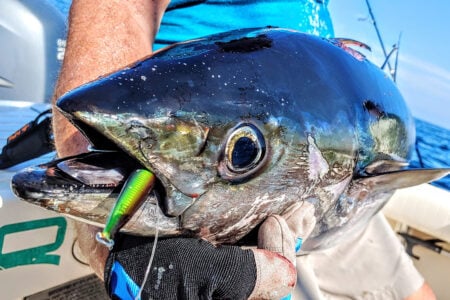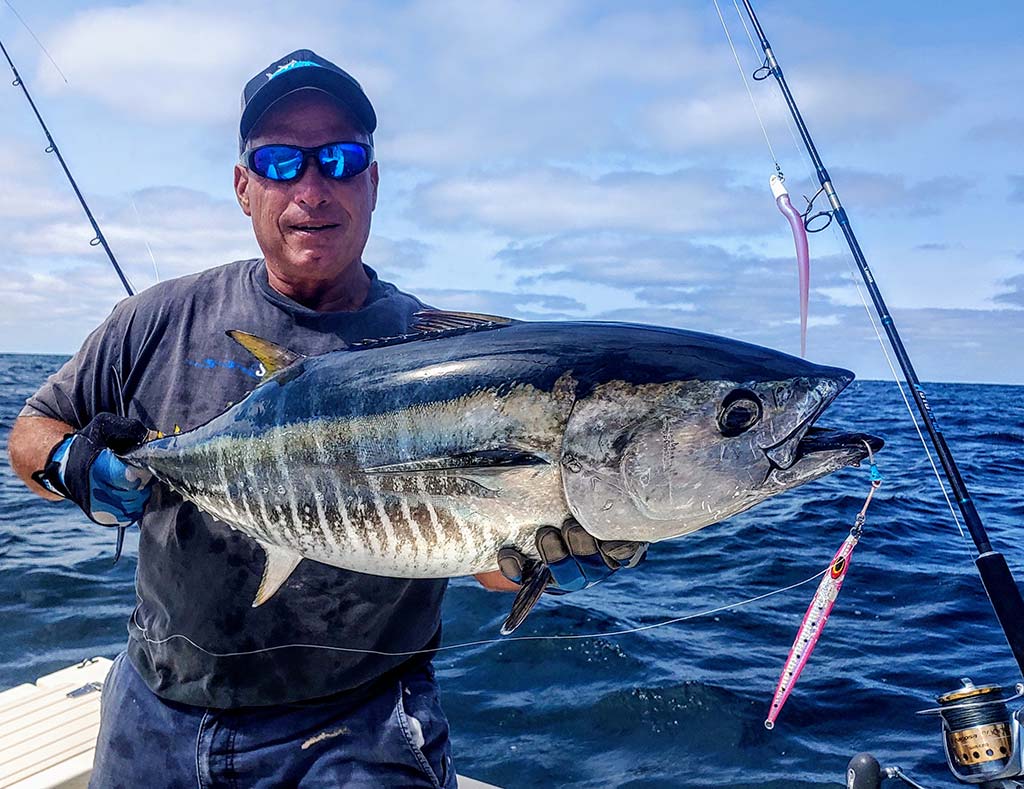
Every summer I look forward to heading to the Jersey middle grounds in search of bluefin and yellowfin tuna. The bluefin that we target range in size from 40 to 100 pounds, where the yellowfin range in size from 40 to 80 pounds.
When heading offshore I like to look at five factors that when they come together my success rate goes up tremendously. Here they are.
1. Have Good Intel
Heading out to a general area that you heard there was a bite at yesterday is a start but having the actual GPS numbers as to where the fish were caught is a bonus. If tuna were caught in the same location for several days in a row it is a good bet they will be there the next day if nothing like weather or sea conditions have changed.
Without the exact location you can be a few miles away and be out of luck. Good intel requires having a network of anglers that will share numbers or send numbers via a Garmin InReach while out on the water. An expansion channel on your VHF also works very well.
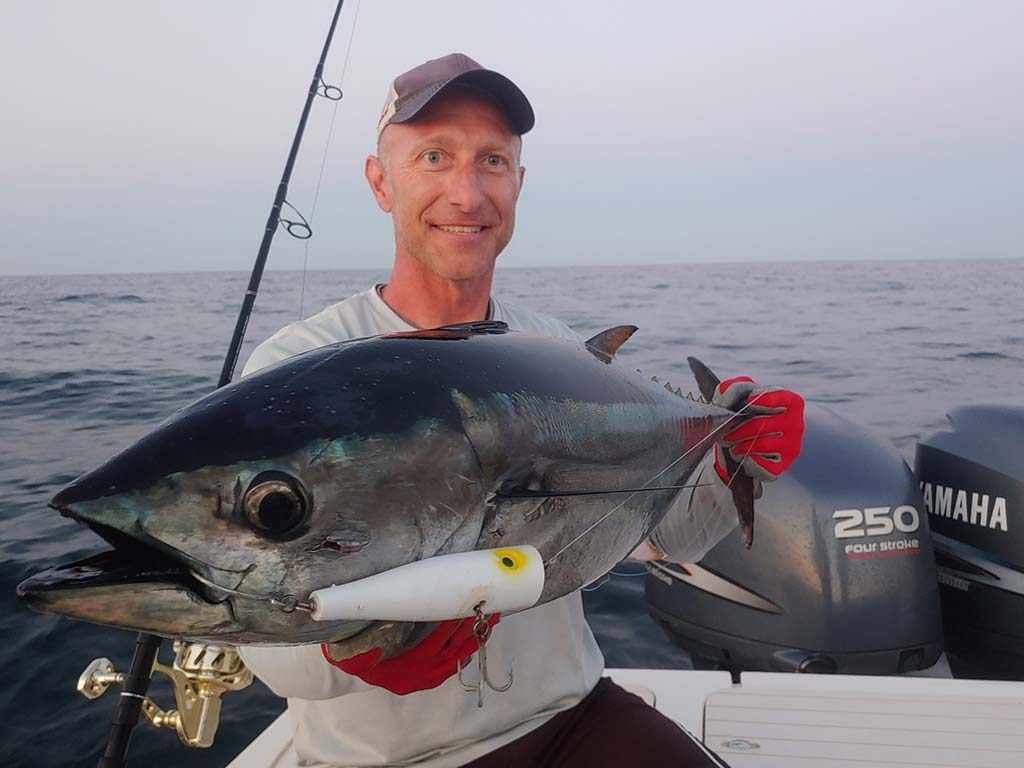
2. TEMPERATURE BREAKS
When heading offshore it is advantageous to know where temperature breaks are located as these are fish attracting locations. Warm water is less dense then cold water so when they meet they may will not mix right away. When this phenomenon occurs in a vertical plane deep below the surface it is called thermocline. The warm water sits on top of colder bottom water. This same phenomenon can occur horizontally at the surface before settling occurs. These regions of different water densities will trap phytoplankton, aka algae, and as a result draw in small baits that will attract the larger predators like tuna. If you watch your temperature gauge you can read a slight temperature difference when you cross between the two areas.
I subscribe to an offshore satellite service and do my homework the night before getting the LAT/LOT positions of where these temperature breaks are located.
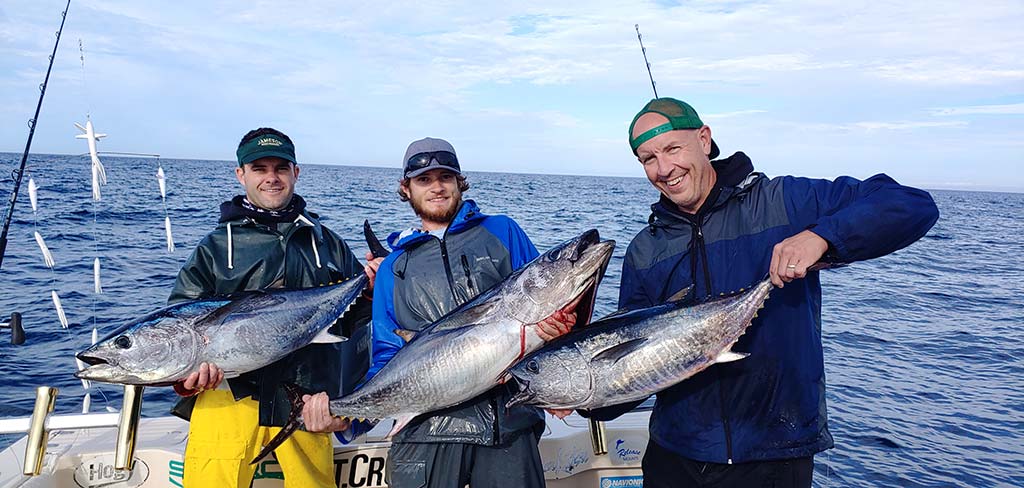
3. Turbidity Breaks
When plankton near the surface accumulates it is also visible with a satellite shot and is referred to as how turbid the water is. Turbidity is commonly spoke of as how clean or dirty the water is, but in reality, it is only accumulation of algae in the water. With the SAT shot one can see the edge or where the “clean and dirty water” meet. This is the area you want to fish as it is along these edges where tuna will travel.
If you don’t subscribe to a service this blended water can also be visible to the trained eye with a good pair of polarized sunglasses. You can see the pockets and edges where the water starts to go from green to blue when you get to where the break line actually is.
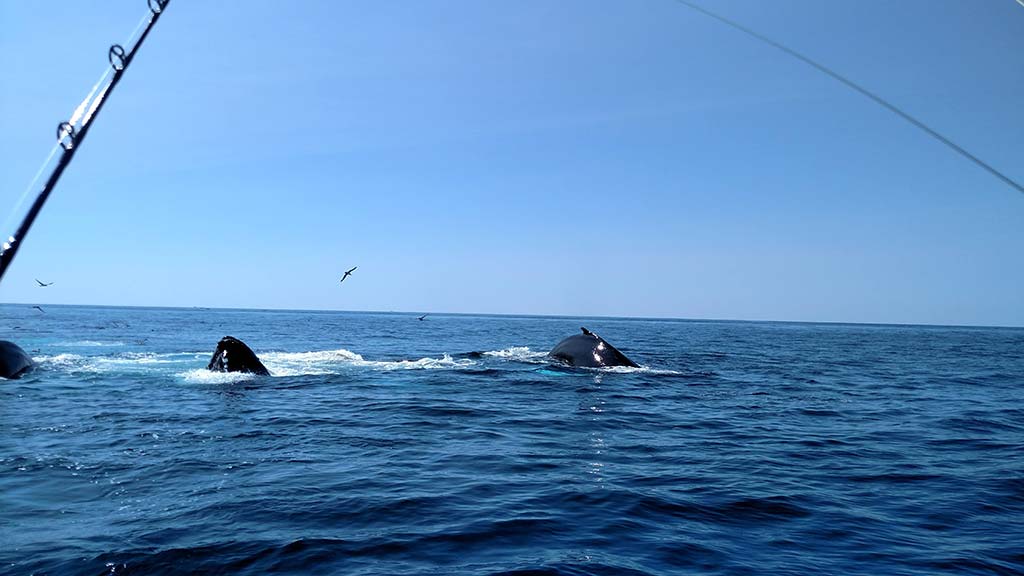
4. Find The Feeds
It’s important to be able to see both subtle and obvious signs of life on your way to your intended spot and stop and check these areas out. Spotting humpback or finback whale feeds are the easiest stop signs to see in the distance. On a clear day you can see the vapor spout of a whale a half mile away. Two tone dolphins can also be seen at this distance parabolically footballing across the surface of the water. These are short beak dolphin and are identifiable by their two colors, aka two tones, their grey dorsal surface and white ventral surface.
Whales are massive creatures and require a lot of food to sustain them. On any given day they can eat several tons of food whether it be sand eels, squid, sardines, or butterfish. If they are diving, surfacing, and circling this is a sure sign they are feeding in a particular area. You should fish these feeds hard because the tuna will be mixed in. A lot of bait is stunned or injured by the whales so this becomes and easy meal for the tuna.
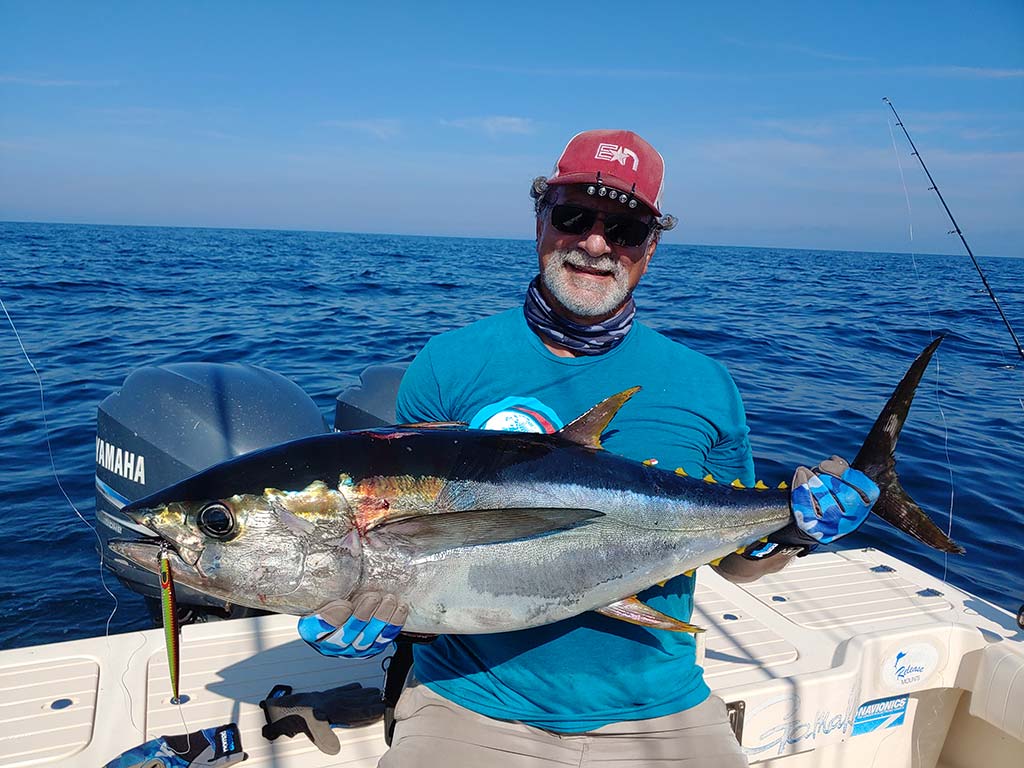
5. Signs Of Bait
Before heading offshore this season, be sure to log in at hmspermits.noaa.gov for your vessel’s HMS Permit. You may also request an application package be mailed to you by calling the NOAA Fisheries Customer Service Center at 888-872-8862.
Remember that HMS Angling category and HMS Charter/Headboat permitted vessel owners are required to report the catch of all bluefin retained or discarded dead within 24 hours of the landings or end of each trip either by accessing the HMS Permit Shop online, using the HMS Catch Reporting app, or by calling 888-872-8862 (Monday through Friday from 8 a.m. until 4:30 p.m.)
Needless to the say the feeds are not going to occur unless bait is present. Tuna need to feed everyday so if you find bait there will be a good chance the tuna will be there too. One thing I can say for sure is that if there is no bait then keep moving. Signs of bait can be highly visible at times either on the surface or on your fishfinder. Juvenile herring, tinker mackerel, butterfish, anchovies, and even squid can be skittering across the surface. Sand eels will easily show up on your fishfinder as large masses congregated right on the bottom.
If the presence of these baits are not obvious then look for more subtle signs such as a single gull, tern, shearwater, or tuna chick that may be hovering just about the surface of the water as it moves along. It is eyeballing bait or a pod of fish just below the surface. Two or three birds spotted in the distance exhibiting this behavior will definitely make me turn my boat in their direction to take a look.
Other forms of life that peak my interest are the presence of skipjack tuna and bat rays. Skipjack will feed on microbaits as they blitz in massive pods along the surface. Without fail when I find skipjack tuna there are yellowfin with them. Bat rays, as I like to call them, are another form of sea life that holds yellowfin tuna below them. I usually see these rays in the later part of the summer in August. If we are set up and jigging and these rays pass under the boat, we will catch yellowfin. With a good pair of polarized sunglasses these rays can be seen swimming in the water about 20 to 30 feet down. The yellowfin are down below them at about 40 to 50 feet.
When encountering a slick, it’s very important to stop that you take a look with your fishfinder to see if you mark any tuna below. Don’t just look directly below the slick as many times the bait and tuna that are down below may be much further away from where the slick is surfacing. This is because bottom currents may push the tiny particles and oils away from the source having them surface at a different location. For this reason, it is best to make a wide radius with your boat around the slick and take a look.
– Capt. Freda
Subsurface feeds near the bottom will produce slicks on the surface of the water and indicate that something is going on down below. These are usually produced as bait is being eaten below the surface near the bottom and their oils and scales rise to the surface. Wilson Kestrels, aka tuna chicks, will pinpoint these areas as they hover over the slick feeding on tiny particles. On a clam day these slicks are easy to spot as the surface of the water takes on the appearance of an oil sheen. It’s not uncommon to find them as what seems like in the middle of nowhere.

